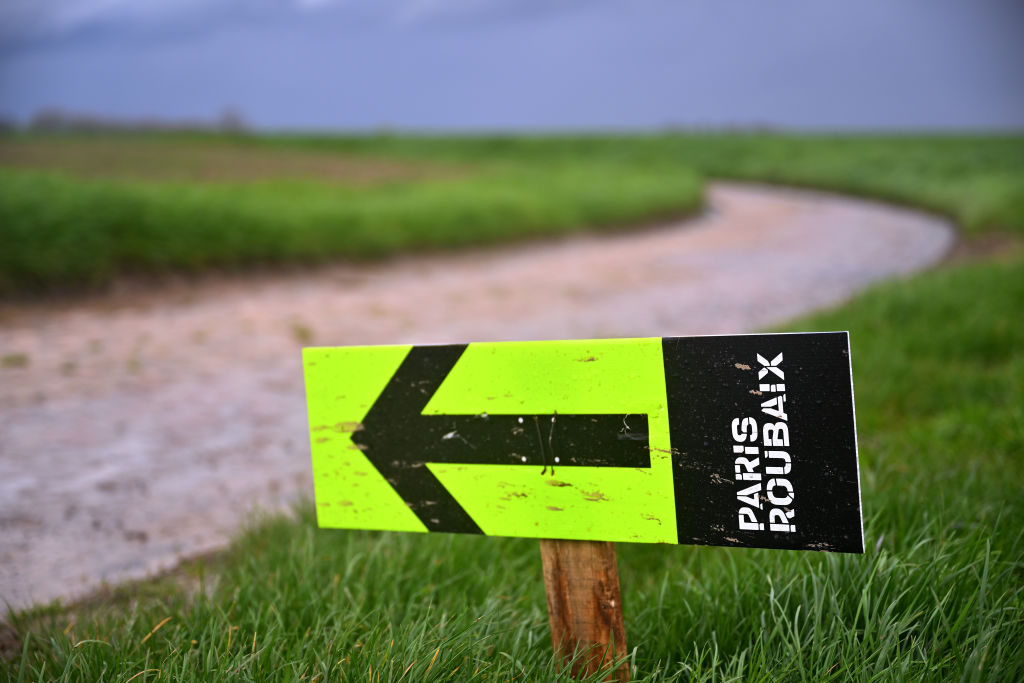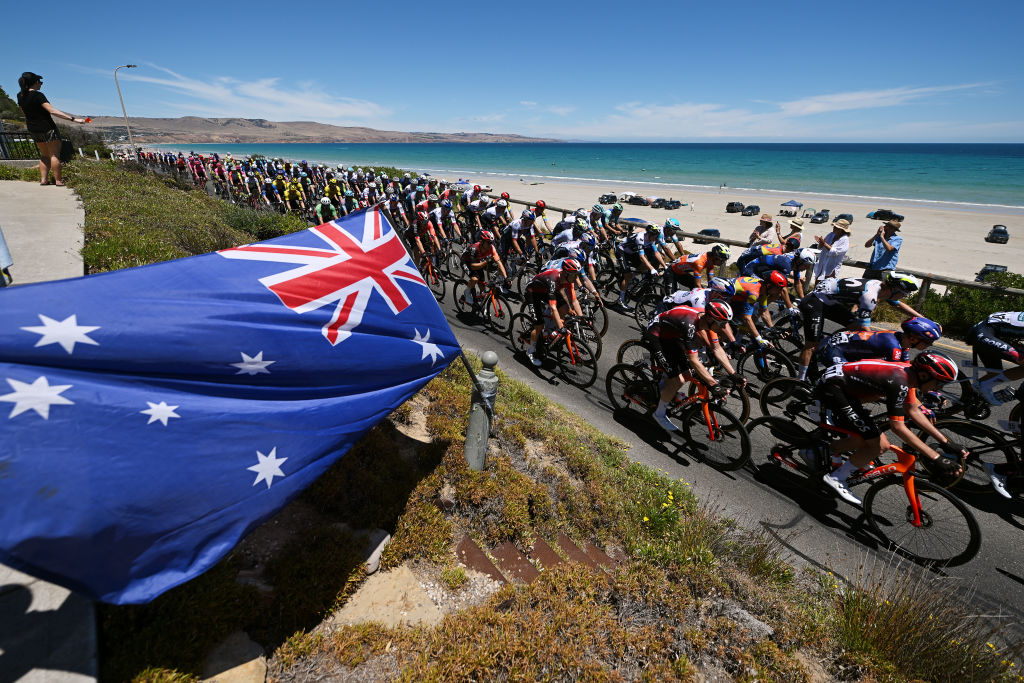Paris-Roubaix organisers seek better future options for slower Arenberg forest entry
Race director blames last-minute change on 'a psychosis in the peloton'

The last-minute addition of three turns, including one of 180 degrees to the Paris-Roubaix men's course at the entrance of the Trouée d'Arenberg is only a temporary measure to slow the speed of the peloton heading into the five-star sector of cobbles, according to race director Thierry Gouvenou.
The turns were introduced five days before the race day at the behest of the Cyclistes Professionnels Associés (CPA) riders' union over concerns that the peloton's speed at the beginning of the Arenberg pavé presents a danger.
In an interview with Sporza, Gouvenou explained, "I had a conversation with CPA (the riders' union) last Friday. They asked us to think about how we could reduce the speed before the Forest. A kind of psychosis had developed in the peloton in recent weeks."
Although the comments came before the massive crash in the Itzulia Basque Country on Thursday, the 'psychosis' stems from a long history of crashes on the Arenberg sector and also, in part, from numerous injuries to high-profile riders in other races, such as Wout van Aert (Visma-Lease a Bike), a favourite to win Paris-Roubaix who suffered multiple fractures in a crash during Dwars door Vlaanderen.
Other incidents have decimated the peloton in the first months of the year, most with minor injuries such as broken collarbones or mild concussions, but serious crashes such as the one that cost Gino Mäder his life in last year's Tour de Suisse have deeply affected the pro peloton.
The security of riders is at the core of the CPA's mission, especially since the election of Adam Hansen as CPA President.
Hansen agreed with the addition of the impromptu roundabout to the Paris-Roubaix course this year, but defending champion Mathieu van der Poel wondered if the change was 'a joke'.
The latest race content, interviews, features, reviews and expert buying guides, direct to your inbox!
Gouvenou said they studied three different options to slow the entrance to Arenberg but the current option was the only feasible one at short notice.
"Due to the limited time, we couldn't do too much. So this is a temporary intervention that we can improve. We know the best solution, but that requires road works and you can't do that in three to four days."
The parking lot of the historic mine situated on the left side of the access road to the Arenberg forest, the Site Minier de Wallers-Arenebrg, is one of the options, but it would take some work.
"That is a lot more natural, but it takes time to achieve that. Along that route, you have the last bend before the railway crossing, not after it. And the last bend is 60 to 80 meters before the Forest.
"We have now opted for a solution that is not super smooth, but that does have a value today and that responds to the aspirations of the riders' union."
Gouvenou recognised the concerns of the riders, noting that the average speeds have gone up from 43kph to 47kph, increasing the dangers.
"That 10 percent increases the risk of falls and the severity of those crashes. I therefore call on all parties to sit around the table together and see how we can reduce the speed. Because now it is a battlefield."
However, with the addition of the turns, the battle for position leading into Arenberg will be even more intense.
"I also told the union ... that the bend is very perpendicular and that there will be sudden braking. The last riders run the risk of falling or putting their foot on the ground. But it has been decided that it is preferable to fall that way than to have something like that happen at high speed on cobblestones."
Although Mathieu van der Poel expressed his surprise at the change, Gouvenou said, "I know he has spoken to people I know, and he himself is convinced that you should reduce the speed.
"He also knows that this is not the best solution, and I share that opinion. I will now work for a year to find a better alternative."

Laura Weislo has been with Cyclingnews since 2006 after making a switch from a career in science. As Managing Editor, she coordinates coverage for North American events and global news. As former elite-level road racer who dabbled in cyclo-cross and track, Laura has a passion for all three disciplines. When not working she likes to go camping and explore lesser traveled roads, paths and gravel tracks. Laura specialises in covering doping, anti-doping, UCI governance and performing data analysis.
